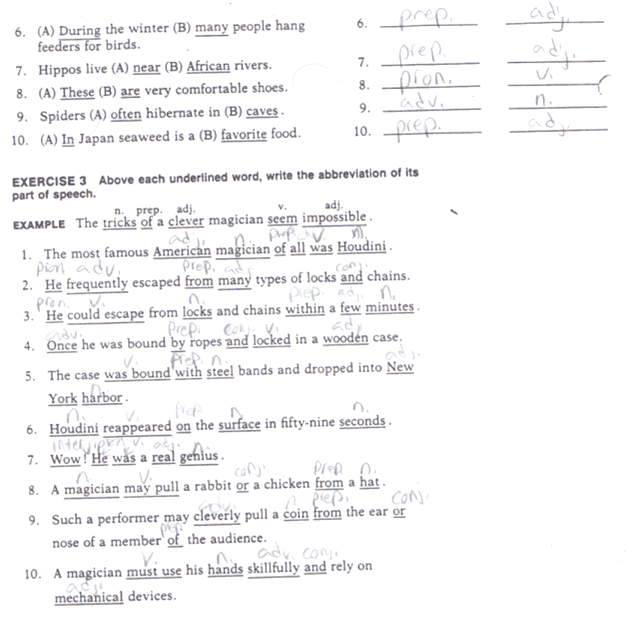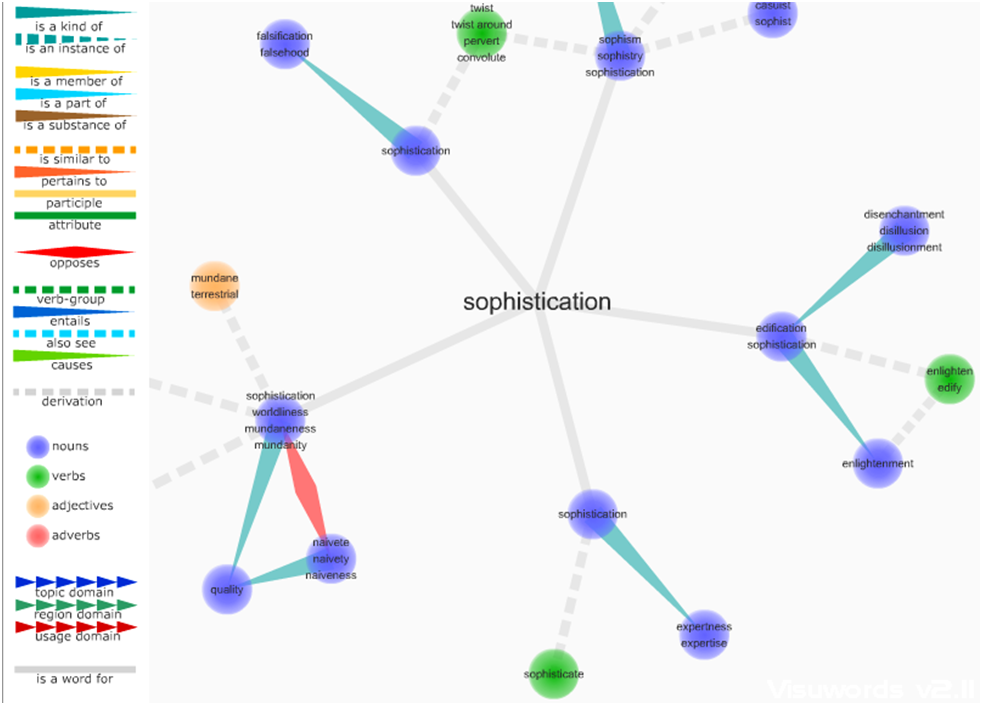The combination of past classroom experiences and traditional university training conspire to keep many teachers behind the curve of new pedagogical techniques. Another impediment often occurs as new teachers are assimilated into a school’s culture. They frequently find that many innovative techniques they do want to try rub against the grain of the schools establishment.
For instance, many students learn about parts of speech in the same way I did when I went to school in the 1970s and 1980s by doing worksheets like the one below.
While this worksheet works fine for students with strong verbal/linguistic learning abilities, it does not work as well for student with other learning styles such as visual learners. Many graphic organizers are available online to complement or replace this activity. However, there is something even better. Dynamic or interactive web applications can allow students to evaluate multiple language connections and differentiates the learning in terms of both style and level of proficiency. One such resource is Visuwords at www.visuwords.com. Visuwords™ uses Princeton University’s WordNet, an opensource database built by University students and language researchers. Combined with a visualization tool and user interface built from a combination of modern web technologies, Visuwords™ is available as a free resource to all patrons of the web.” It allows students to check their own understanding of the parts of speech, edify their own writing, and see how language is a web of infinitely connected concepts. As you can see below, I entered the word “sophistication” and found the verb “edify,” which I just used to describe how students can benefit from using visuword.
I think one answer to better instruction is to combine proven instructional strategies like nonlinguistic representation- graphic organizer with interactive technological tools. Now I have two questions for you:
- What other modern tools can be combined with tried and true instructional strategies?
- What can be done to speed up the adoption of these tools by today’s teachers?
Written by Matt Kuhn.



I sometimes find that the technology I use becomes the focus of the lesson. Is there a strategy or way to introduce new technology to students and still transition into a lesson?